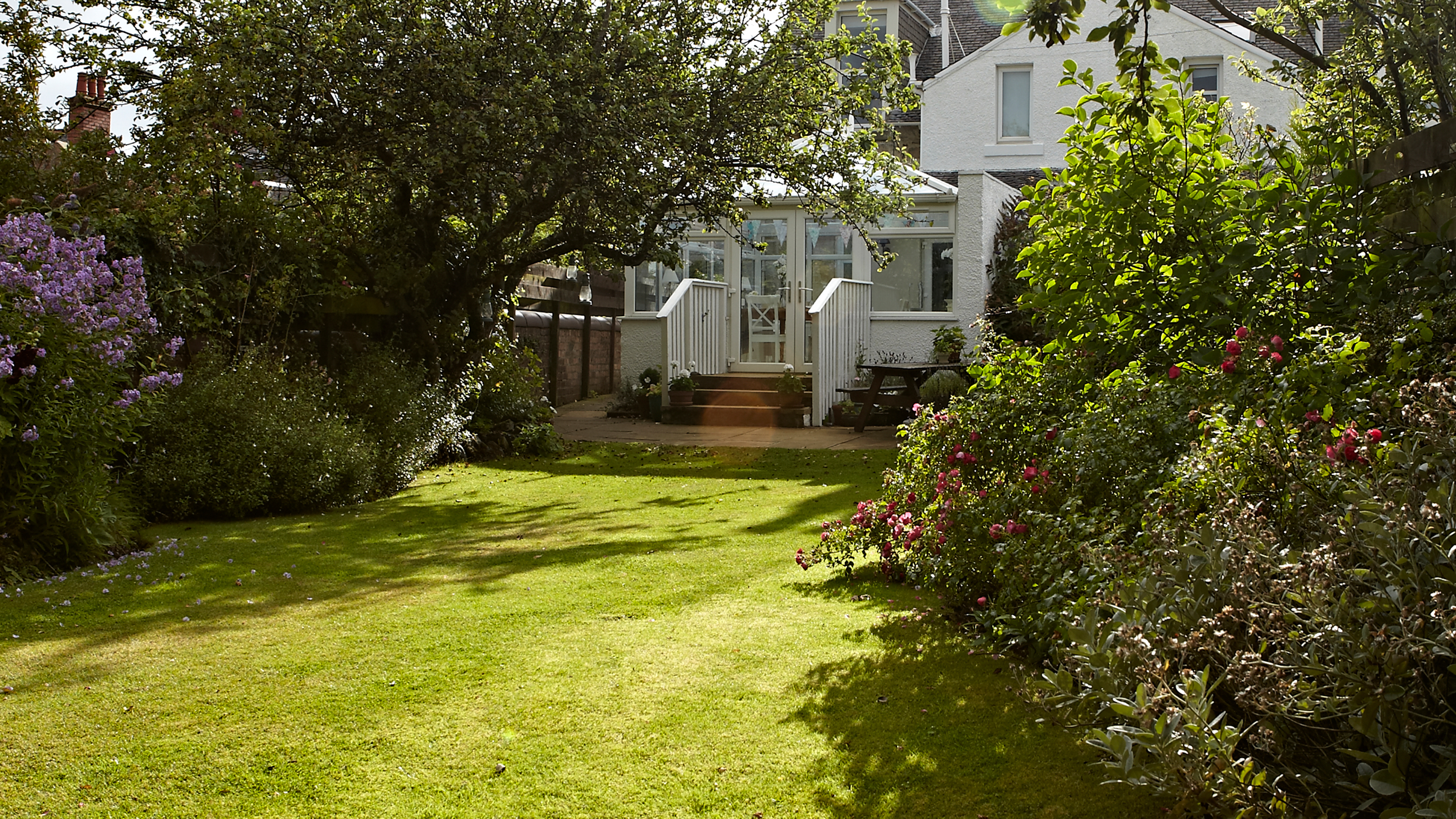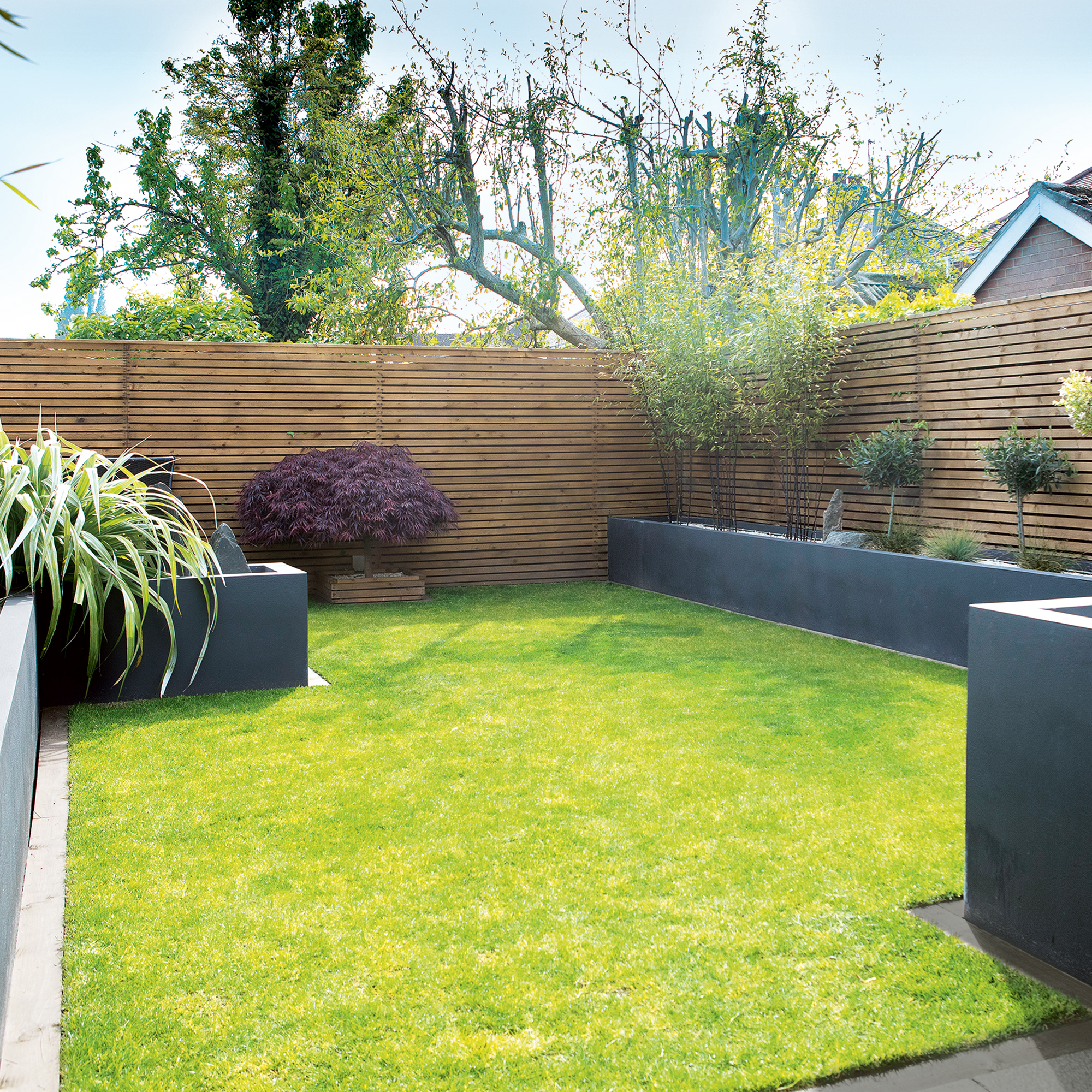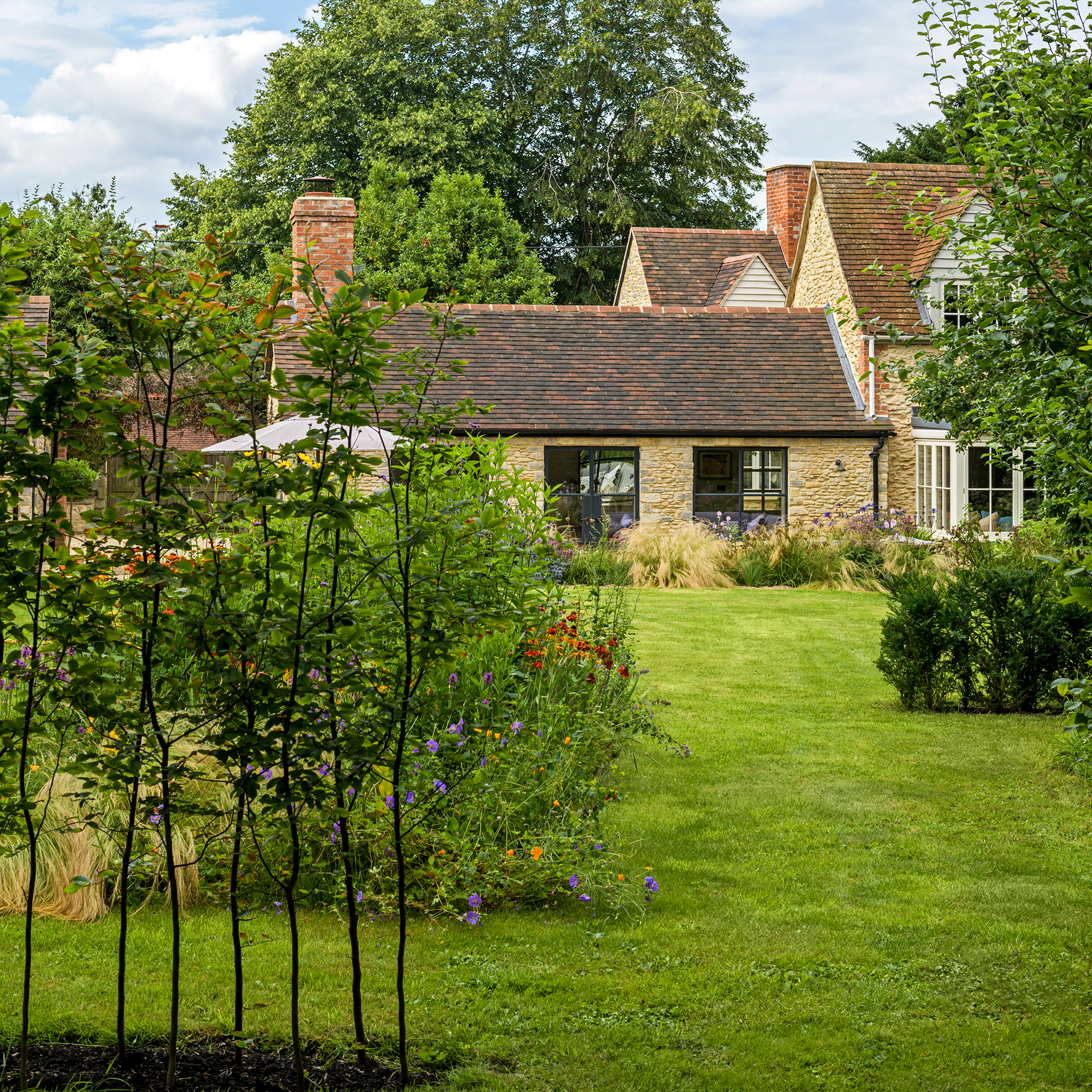When is the best time to sow grass seed ? The experts tell us all
Find out when to do this job, how to prepare the ground and other top tips to ensure a lush, green lawn

Lauren Bradbury

If you’re wondering when to sow grass seed, there’s a high chance that your lawn needs some TLC. But as there’s a right and wrong time to sow grass seed, you’ll have to follow the rules if you want a lawn you can be proud of.
Yes, gardens in the UK take a beating every single year and our lawns can often suffer the consequences from the wet and windy winters to the dry summer months. And while many people associate lawn care with raking and mowing, even the best lawnmowers can’t protect you from patchy grass and discolouration.
But if you don’t have the money to buy all-new turf, sowing grass seed could be the budget garden idea you’ve been looking for. To help you get this garden job done (and done properly), we’ve asked the experts for their advice on the best time to sow grass seed.
When is the best time to sow grass seed?

If you want to bring your lawn ideas to life, you need to sow your grass seed at the perfect time. 'The best time to start sowing grass seed to prepare your lawn for summer is from March to May,' states Chris Bonnett, the founder of Gardening Express. 'That’s the optimal period for grass seeds to germinate, as the weather conditions are favourable and the soil is warm and moist.'
In fact, this makes it one of the best jobs to do in the garden in April. But you don’t have to worry if you miss the boat, as you also have a second window of opportunity to sow grass seed later in the year.
As Sean Lade, director of Easy Garden Irrigation, explains, 'Autumn (August-October) is perfect for sowing grass seed because the soil is still warm from summer, encouraging germination.’
‘Additionally, the cooler temperatures and more frequent rainfall help to keep the soil moist, ensuring that the grass seed has the right conditions to grow.'
Sign up to our newsletter for style inspiration, real homes, project and garden advice and shopping know-how
If you miss the boat again, you do have a third option. However, this does come with a warning.
'It is also possible to sow grass in the summer months, it’s less than ideal due to the higher likelihood of dry spells, which can negatively impact germination and establishment,' adds Sean. 'If you are going to sow seed in the summer, make sure you set up a good sprinkler to keep the soil moist. '
Sowing grass seed on top of existing grass

Sometimes, the question isn't just focused on the best time to sow grass seed but also whether you can sow grass seed on top of grass.
Well, you’ll be happy to know that this is an extremely common practice and perfect for those who have patchy lawns.
'Overseeding a lawn (adding grass seed to an existing lawn) is pretty straightforward and will bring great results for your garden if carried out correctly,' says Sean from Easy Garden Irrigation.
'It will make your lawn look fuller, eliminate patchy, sparse areas (especially after the dry summer we had last year) and prevent an invasion of weeds from ruining your lawn.'
'Preparation is critical, and the first step is to give the lawn a cut. For long grasses, you will want to scalp it down; otherwise, a regular cut with the best lawnmowers and rake will do fine. '
How to prepare the ground for grass seed

While you could simply throw some grass seed on your existing grass and hope for the best, preparing the ground first will give you better results. It’s also pretty easy, too.
'To prepare the soil for grass seed, you should start by removing any weeds or debris from the area,' advises Chris from Gardening Express. 'Then, improve drainage and nutrient distribution by aerating the lawn using a rake or tiller.' At Ideal Home, we love the TABOR TOOLS J16E Telescopic Metal Rake from Amazon.
'The next step to get the best results is to aerate your lawn,' continues Sean from Easy Garden Irrigation. 'A garden fork will be fine for aerating small gardens. But for larger spaces, you will want to use an aerator tool to make the job quicker and get the best results.'
'Aerating the lawn essentially creates pockets for the grass seed to drop into. If doing this with a garden fork, you want to make your holes no deeper than 8 cm (3 inches).'
'After aerating the lawn to create your seed pockets, you will want to scarify your lawn. You can just use a hard wire rake to do this or rent an electric scarifier if you have a large lawn. The objective is to break up the soil. It needs to go deep enough to create lines in the soil.'
How to sow grass seed

When you’re confident that you’ve chosen the best time to sow grass seed and you’ve prepared the ground for seeding, you can get started.
'The amount of seed needed will depend on the current state of your lawn and its grass thickness, so it is essential to consider this,' advises Sean from Easy Garden Irrigation. 'Make sure you research what the best seed is going to be for your lawn type.'
'If you try to seed by hand, it will not be consistent, so I suggest using a seed spreader to get the best results,' continues Sean. After spreading the seed, we must ensure it has good contact with the lawn. I find using a semi-firm brush over the area does a good job.'
'To get lush and healthy grass, you need to make sure to scatter the seeds as evenly as possible,' elaborates Chris from Gardening Express. 'Check the seed mix package for weight per square metre and weigh out the required quantity of seeds according to the size of your lawn.'
'A good rule of thumb is to divide the seeds in two and scatter one batch first, so you have a chance to check for uneven spots and make amends when you’re overseeding.'
How to look after new grass seed

Although you could call it a day and make yourself a cuppa when you’ve finished spreading the grass seed, you might want to hang on for a bit longer. If you want to give your grass seed some extra TLC and guarantee its success, you should also know how to look after your new grass seed, and this involves a layer of protection and some water.
'Although not essential, adding a thin layer of soil over grass seed can be beneficial for a few reasons,' answers Sean from Easy Garden Irrigation. 'The first and obvious reason (in my eyes, anyway), is to protect the grass seed from being eaten by birds.'
'In addition to being protected from birds, though, a thin layer of soil can help ensure the grass seed is in direct contact with the soil, which is crucial for successful germination. It will also help retain moisture in the soil, promoting even better germination.'
'To cover grass seed, you can use a thin layer of topsoil, compost, or even a fine layer of peat-free compost. Be careful not to add too much material – you only need a light covering, around 3-6 mm (1/8-1/4 inch) in depth. Rake the material gently over the seeds to ensure even coverage.'

You should also make sure that the new grass seed doesn’t dry out. So, if it’s not raining, aim to water the grass seed every single day. On particularly hot days, you may even need to water it twice or even three times.
'The last piece in the puzzle is to ensure you gently water the area immediately after and continue to water regularly for the next few weeks to ensure germination,' concludes Sean from Easy Garden Irrigation.
'Depending on the weather and amount of rainfall you receive, you may alter this to avoid overwatering. If you haven’t considered this already, an automatic watering system is going to be much more efficient at watering regularly, saving you both time and reducing water consumption.'
FAQs
What month is best to sow grass seed UK?
You can sow grass seed anytime between March and May, but this isn’t the only time you can give your patchy lawn some TLC. You can also sow grass seed between August and October if you miss the boat and want to give your lawn some extra attention before the colder temperatures arrive
Can I put grass seed on top of grass?
Yes! Putting grass seed on top of your existing grass is called overseeding, and it’s one of the best ways to deal with patchy areas of grass. You just need to make sure that you properly prepare your grass for grass seed before starting this process.
Do you wet soil before grass seed?
Grass seed needs moisture to grow, which is why it’s always a good idea to sow seeds on wet soil. If you’re sowing in the spring or autumn months, it may already be fairly moist, so you might not need to add more water. But if you can feel that the soil is dry, you should definitely wet the soil before adding the grass seed.
Now you know when to sow grass seed, it’s time to start sowing!

Thea Babington-Stitt is the Assistant Editor for Ideal Home. Thea has been working across some of the UK’s leading interiors titles for nearly 10 years.
She started working on these magazines and websites after graduating from City University London with a Masters in Magazine Journalism. Before moving to Ideal Home, Thea was News and Features Editor at Homes & Gardens, LivingEtc and Country Homes & Interiors.
- Lauren BradburyContent Editor (House Manual)